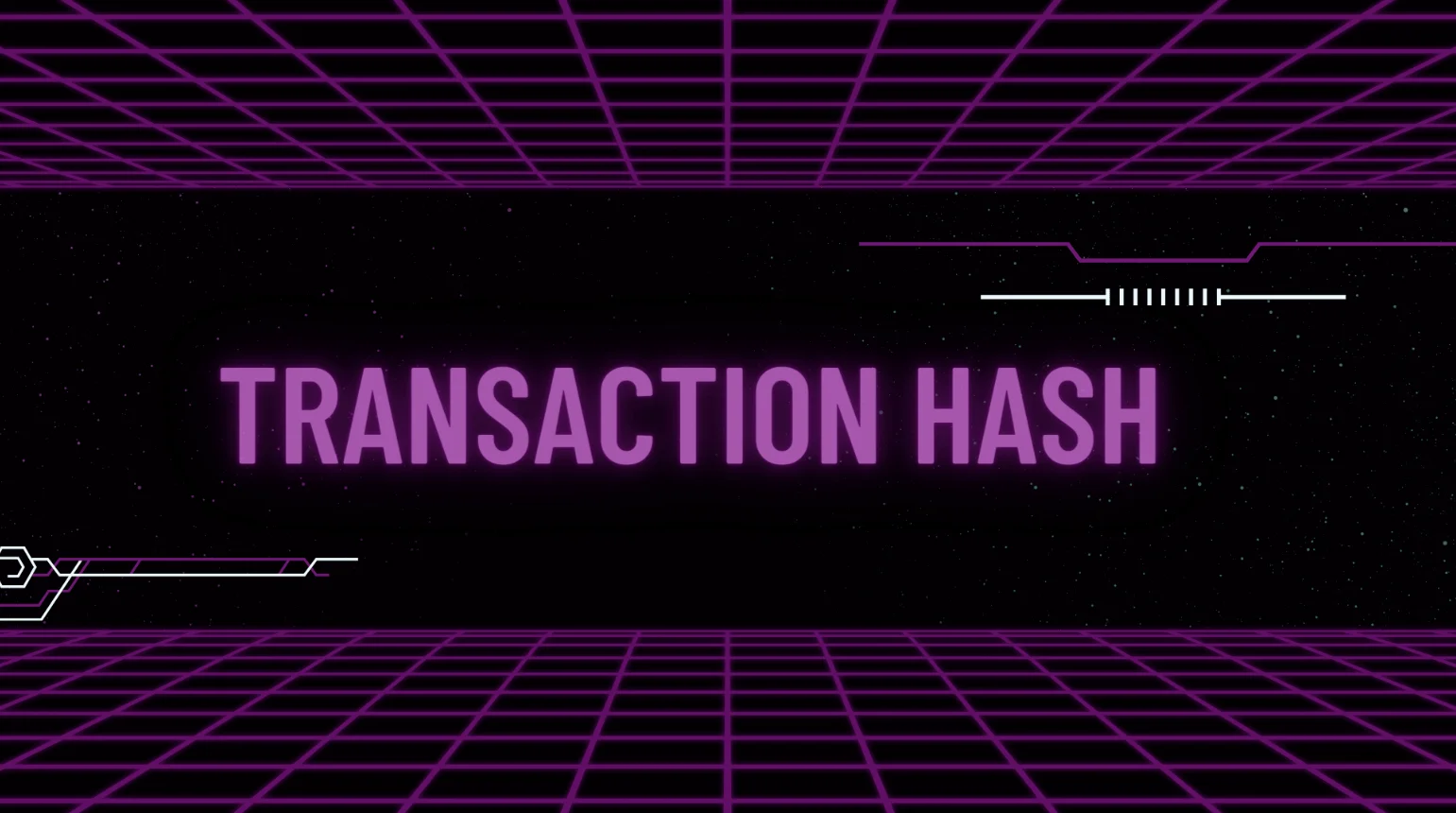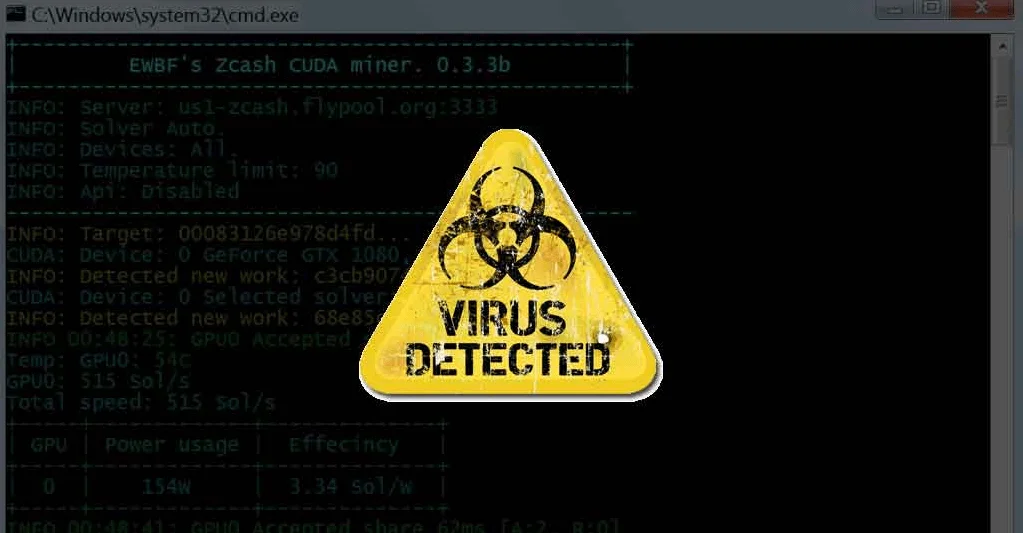Exploring the Basics of Transaction Hashes
Understanding transaction hashes is fundamental in the world of blockchain and cryptocurrency. These unique identifiers play a crucial role in the integrity and security of blockchain technology.
Definition: What Is a Transaction Hash in Blockchain Technology?
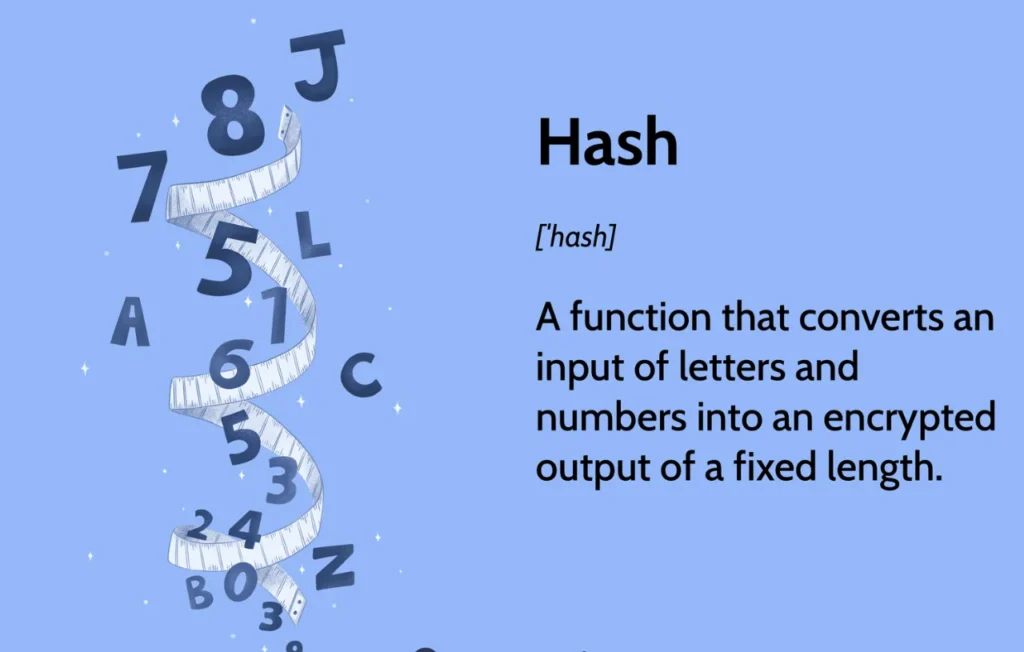
A transaction hash, often known as a transaction ID (TXID) or hash, is a unique string of alphanumeric characters generated to identify and validate a specific transaction on a blockchain. This identifier serves as a fingerprint for the transaction, encapsulating details like the sender’s address, the receiver’s address, and the amount transferred.
How a Transaction Hash Works: Connecting Blocks and Transactions
- Input Processing: When a transaction is made, it includes the sender’s and receiver’s addresses, the amount, and a timestamp. This information is processed through a hash function.
- Hash Creation: The hash function produces a fixed-size string of characters, the transaction hash, from the input data. It’s unique to the transaction’s details.
- Block Incorporation: This hash is then included in a block along with other transactions, where it contributes to the block’s own hash.
- Blockchain Addition: Once the block is verified and added to the blockchain, the transaction hash remains embedded within, serving as a permanent record.
- Verification: Anyone can use the transaction hash to search the blockchain and verify the transaction’s details, ensuring transparency and security.
The Importance of Transaction Hashes in Cryptocurrency Security
Transaction hashes are pivotal in maintaining the blockchain’s integrity and security. They enable users to verify transactions independently, ensure data integrity, and provide a transparent record of all transactional activities on the blockchain. By securing each transaction uniquely, they prevent tampering and fraud, reinforcing trust in the blockchain system.
Each transaction hash plays a crucial role in linking blockchain blocks sequentially, ensuring the entire chain’s immutability.
This immutability is vital for the trustless environment of blockchain technology, where each participant can verify the network’s transaction history’s accuracy and consistency. Transaction hashes are integral in confirming that no part of the blockchain has been altered retroactively.
Also read:
What is an NFT Airdrop? Your Easy Guide to Free Digital Treasures
Understanding “What is a Fiat Wallet?” in the Digital World
Exploring the Two Types of Stablecoins: A Comprehensive Guide
How to Find and Use Your Transaction Hash
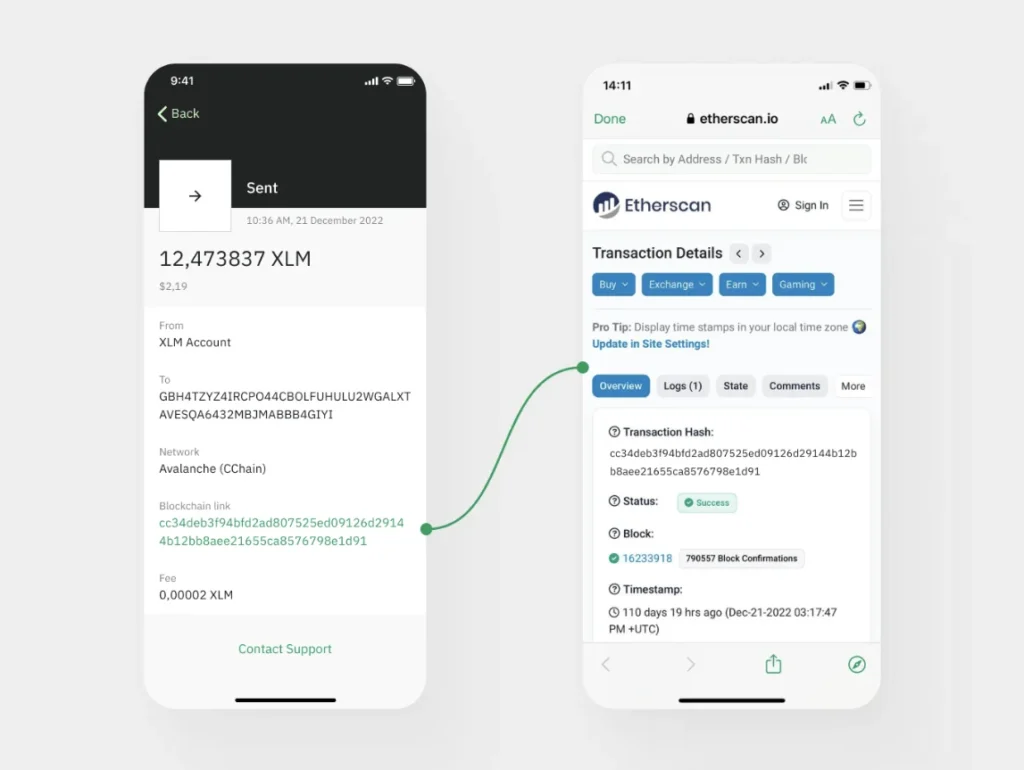
Navigating the digital landscape of blockchain requires a solid understanding of transaction hashes. These unique identifiers are crucial for tracking, verifying, and securing your transactions on the blockchain.
Whether you’re a seasoned crypto user or new to the blockchain world, knowing how to locate and utilize your transaction hash is essential.
Step-by-Step Guide to Locating Your Transaction Hash
- Log into Your Wallet or Exchange Account: Start by accessing the platform where you conducted the transaction.
- Navigate to Transaction History: Locate the transaction history or activity log section of your account.
- Identify the Specific Transaction: Find the transaction you are interested in by looking at the details like the date, amount, and recipient.
- Locate the Transaction Hash: The transaction hash is usually listed with the transaction details. It might be labeled as ‘TxHash’, ‘Tx hash‘, ‘Transaction ID’, or similar.
- Copy the Transaction Hash: Usually, you can click on the hash to copy it or there may be a copy icon next to it.
Different Methods Across Platforms: From Exchanges to Wallets
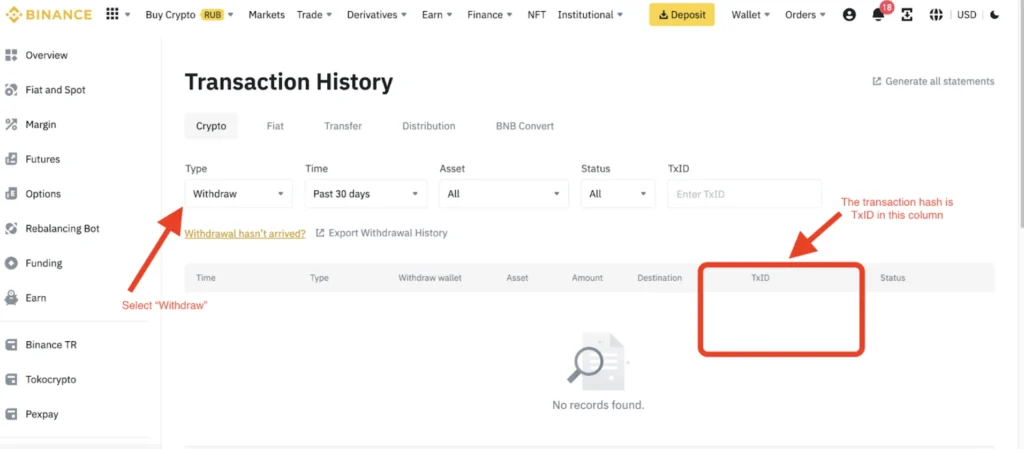
- Exchanges: Most exchanges provide a detailed transaction history section where you can find the TxHash. It’s typically accessible from the dashboard or under a specific menu labeled “Transactions,” “History,” or “Wallet.”
- Crypto Wallets: Whether you’re using a hardware wallet, a mobile app, or a web-based wallet, the transaction hash can usually be found in the transaction details or by clicking on a specific transaction.
- Blockchain Explorers: For a more in-depth look, you can paste the transaction hash into a blockchain explorer compatible with the currency you’re using (e.g., Etherscan for Ethereum, Blockchain.com for Bitcoin). This will provide detailed transaction information.
Troubleshooting Common Issues with Transaction Hashes
- Transaction Not Found: If the blockchain explorer shows “Transaction Not Found,” it might mean the transaction is still pending or hasn’t been broadcasted fully. Wait a few minutes and try again.
- Incorrect Hash: Ensure you’ve copied the entire hash correctly. Even a small typo can lead to errors, as every character in the hash is crucial.
- Using the Right Explorer: Make sure you are using the correct blockchain explorer for the specific cryptocurrency. For example, use an Ethereum explorer for ETH transactions and a Bitcoin explorer for BTC transactions.
- Contact Support: If you’re unable to resolve the issue, contact the support team of the wallet or platform you used to initiate the transaction. Provide them with the relevant details to get assistance.
Understanding and effectively using your transaction hash enhances your ability to navigate the blockchain securely and efficiently.
It’s a fundamental skill for anyone engaged in crypto transactions, ensuring you can track, verify, and secure your blockchain activities.
Enhancing Your Blockchain Knowledge: Related Concepts and FAQs
Diving deeper into the blockchain ecosystem unveils a myriad of interconnected components and concepts that are foundational to its operation. Understanding these elements, such as block hashes and Merkle roots, enriches your grasp of blockchain technology and its profound implications. Let’s explore these critical concepts and envision the future advancements they might undergo.
Beyond Transaction Hashes: Exploring Block Hashes and Merkle Roots
Block hashes and Merkle roots are pivotal in the blockchain’s architecture, ensuring integrity and security.
A block hash is a unique identifier derived from the information contained in each block, serving as a fingerprint of that block’s data. It’s crucial for the blockchain’s immutability, as altering any piece of information would change the hash, signaling a breach in the chain.
Merkle roots, on the other hand, streamline data verification across a blockchain network. They summarize all the transaction hashes in a block into a single hash, the Merkle root, enabling efficient and secure verification of large data sets without needing to download every transaction.
This mechanism not only ensures data integrity but also enhances network efficiency by enabling quick and lightweight verifications.
Future of Transaction Hashes: Innovations and Evolving Use Cases
The evolution of transaction hashes is closely tied to the broader blockchain technology advancements. As we venture into future blockchain landscapes, transaction hashes could see innovative applications beyond their current scope.
They might become more integral in enhancing privacy, scaling solutions, and facilitating instant cross-chain transactions.
Emerging technologies like zero-knowledge proofs could leverage transaction hashes to allow for transaction validation without revealing any underlying data, thereby bolstering privacy.
Furthermore, as blockchains aim for greater scalability, transaction hashes may play a crucial role in solutions like sharding, where they can help in maintaining the integrity and connection between different blockchain segments.
Moreover, the advent of interoperable blockchains could see transaction hashes being used to securely and efficiently verify transactions across multiple chains, facilitating a more connected and functional blockchain ecosystem.
These innovations will not only expand the utility of transaction hashes but also contribute to the maturing of blockchain technology, making it more robust, scalable, and adaptable to a myriad of applications.
FAQs: Addressing Common Questions About Transaction Hashes
Is it safe to give transaction hash?
Yes, it is generally safe to share a transaction hash because it only contains the details about the transaction, not the assets themselves. However, it reveals the transaction’s details, so it should be shared wisely.
What is TXID or transaction hash?
TXID, or transaction hash, is a unique identifier that represents a transaction recorded on the blockchain. It’s like a receipt number, confirming that the transaction exists and providing details about it.
How long is a transaction hash?
A transaction hash is typically a string of 64 hexadecimal characters, regardless of the blockchain it originates from. It’s a fixed length, ensuring uniformity across different transactions.
Is a transaction hash private?
No, a transaction hash is not private. It’s a public identifier that anyone can use to look up the details of the transaction on the blockchain through a block explorer.
Where can I find my transaction hash?
You can find your transaction hash in your blockchain wallet, transaction history, or on the exchange platform from where you made the transaction. It’s usually visible alongside the details of your transactions.
How is transaction hash generated?
A transaction hash is generated using a cryptographic hash function, which processes the transaction’s details (like amounts, addresses, and timestamps) to produce a unique, fixed-length string.
What does a transaction hash look like?
A transaction hash looks like a long string of letters and numbers, containing 64 hexadecimal characters. Each character can be any number from 0 to 9 or a letter from A to F.
Is the transaction hash public?
Yes, the transaction hash is public. Anyone can use it to verify the transaction details on the blockchain, making it an essential tool for transparency and verification in blockchain systems.
Why use hash in blockchain?
Hashes are used in blockchain to ensure data integrity, provide a secure way of verifying transactions, and maintain the blockchain’s structure. They make the blockchain tamper-evident, ensuring that once data is recorded, it cannot be altered without detection.
